Equipping the house with a separate room for storing clothes and shoes allows you to remove bulky furniture and free up space, optimize your life and quickly find the right item of clothing. You can turn to specialists for the manufacture of a finished storage system, or you can, having studied certain information, equip a dressing room with your own hands.
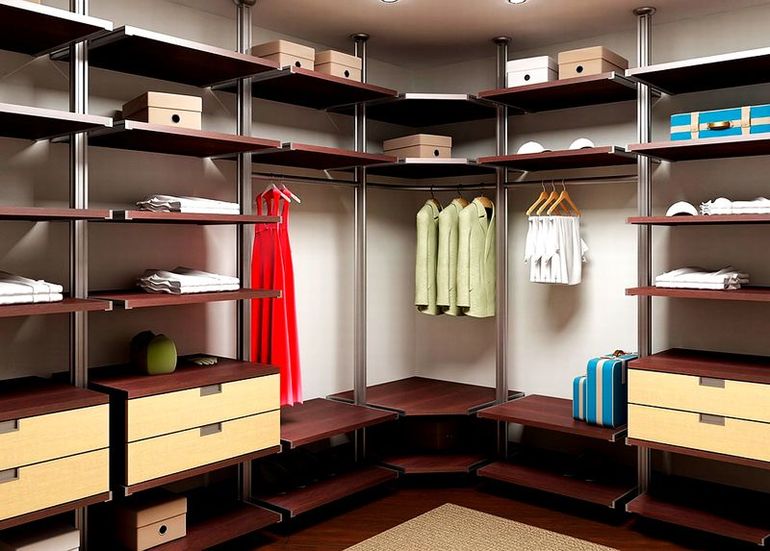
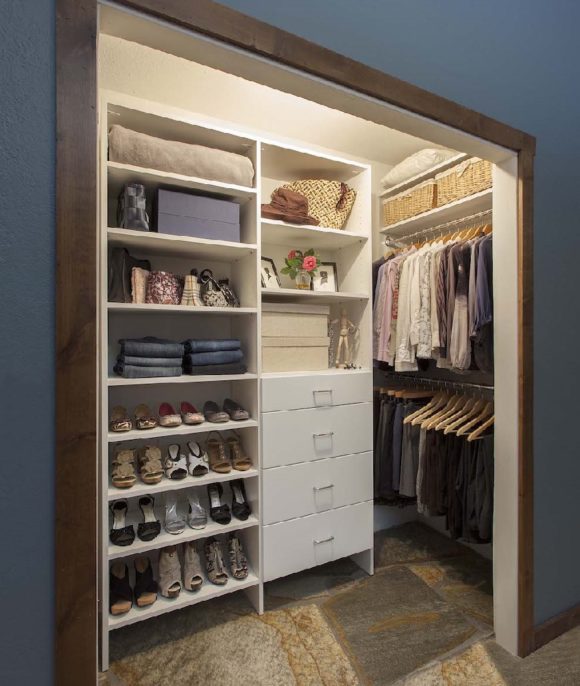
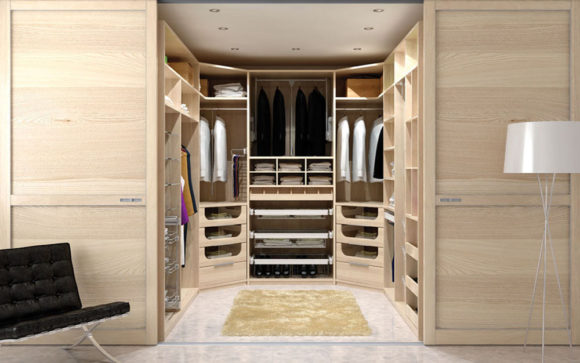
Content
Size, ventilation and lighting
In modern realities, people often live in small apartments and take care of every centimeter when planning repairs. Therefore for them the key factor is the size of the room. The area of the smallest dressing room can be 1.2-1.5 m2 - in the form of a rectangle of 1.5 x 1 m². A good option is to equip the corner dressing room with your own hands, it will be even more spacious than a similar rectangular one. This will be due to the longer side, on which will be allocated space for shelves and storage systems.
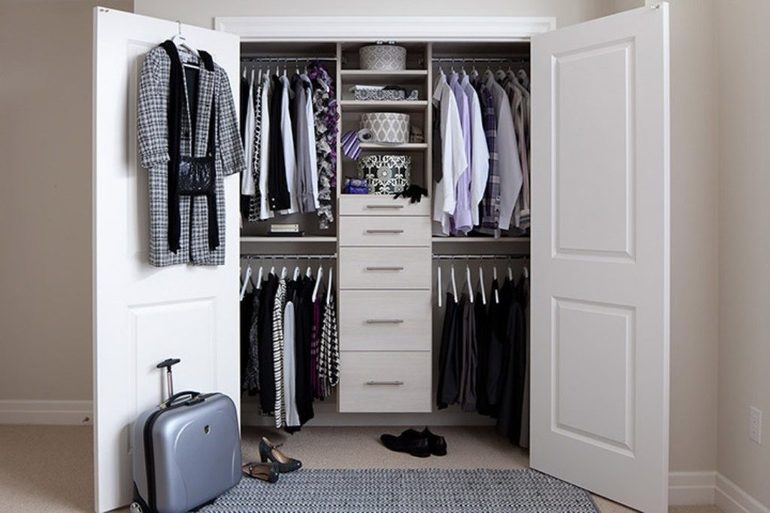
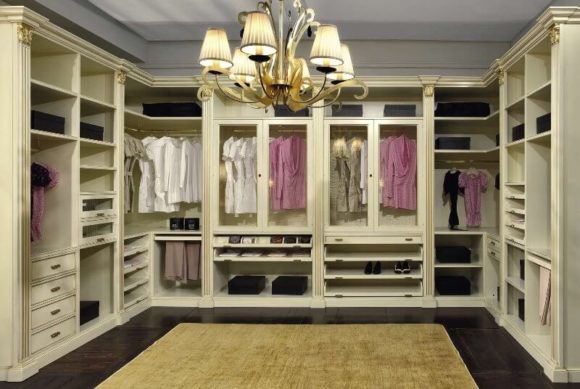
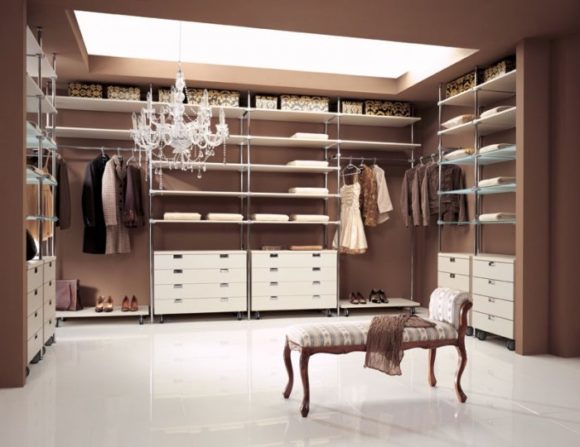
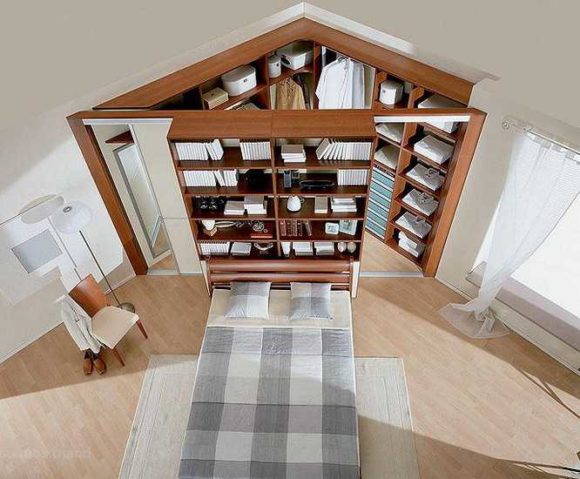
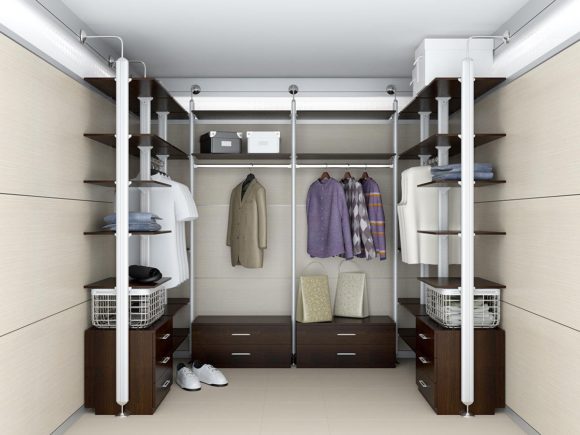
In a tiny rectangular wardrobe room, unilateral layout of things is possible with a width of at least 1.2 m, bilateral - at least 1.5 m. The depth of the room should be provided so that people can enter it. This wardrobe and differ from sliding wardrobes, in addition to the ability to install any doors.
Even a tiny wardrobe room, and even more so a large one, needs equipped with ventilationin order to avoid the musty smell that quickly appears in a closed room. The fan is traditionally installed at the top of any wall, in the opposite side from the door.
If the wardrobe is equipped in the bedroom or near it, when choosing a device, you need to make sure that it is not too noisy.
As for the lightingIt should be enough. So you can quickly find things, and also correctly evaluate the combination of things when trying on. Any lamps are suitable, but it is better to connect them to motion sensors so that when the doors are opened, the lighting turns on, and when closed, it turns off.
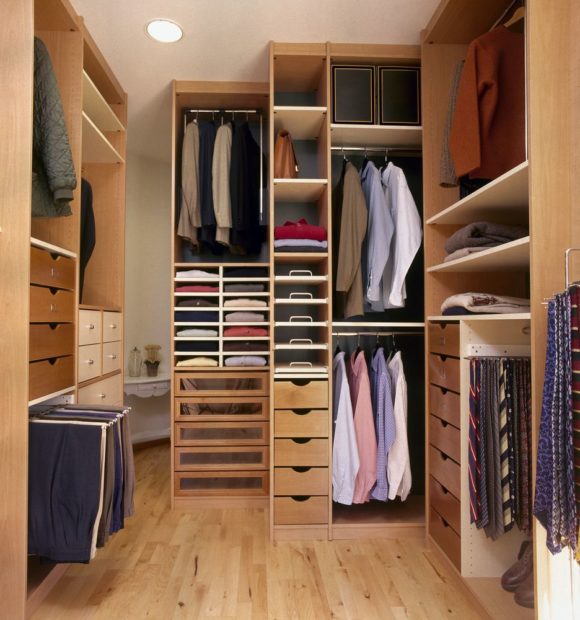
Choosing the best place
When thinking about how to make a dressing room yourself at home, you should first decide which part of the home can be allocated for this purpose. The most difficult thing is to find options in a small apartment, but even in them the issue can be resolved through partial redevelopment. There are several more ideas on how to equip a wardrobe with a shortage of space:
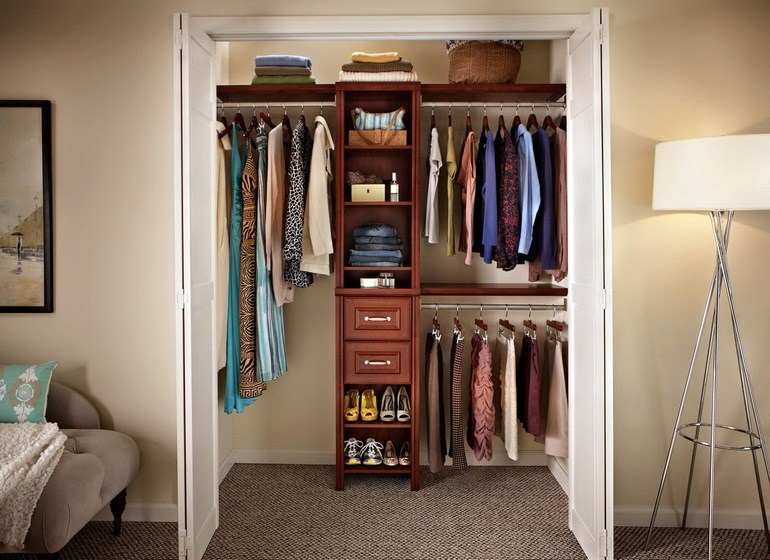
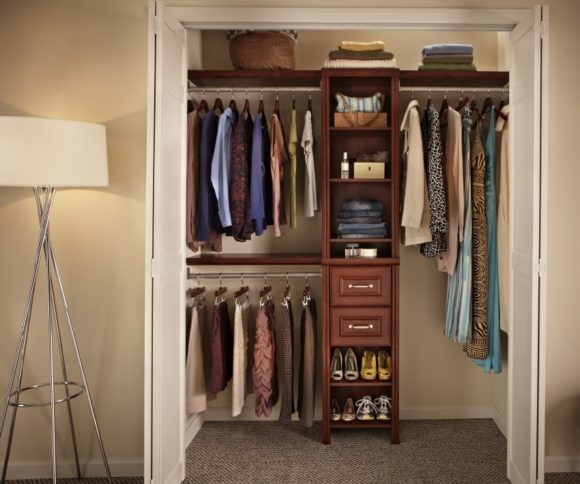
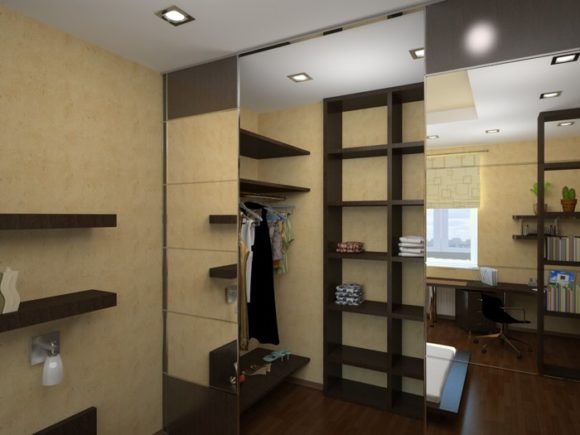
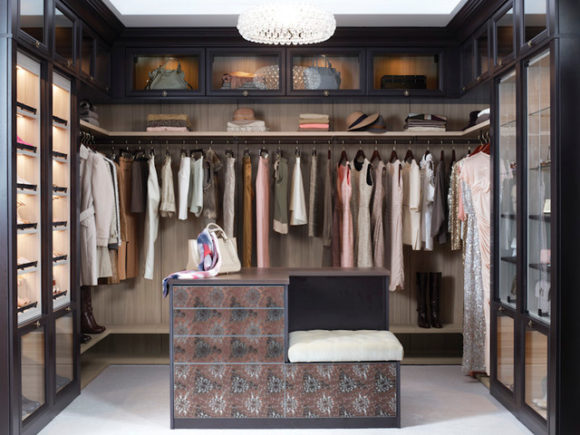
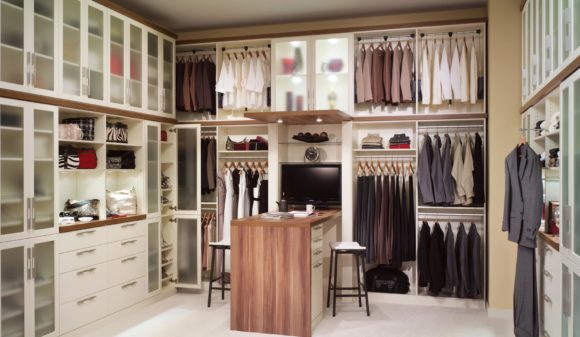
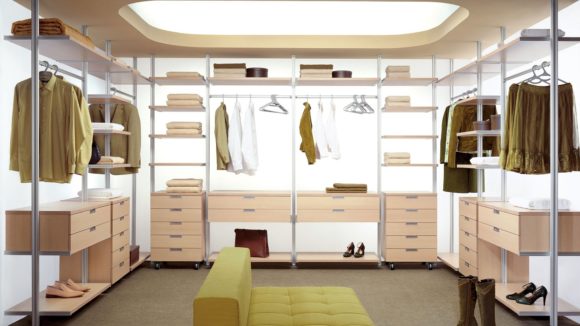
- Convert the pantry to the storage system.
- Build a functional room in the corner of the corridor, pushing the walls with the center inward.
- Use a balcony or loggia under the premises for clothes and shoes, after warming them. On a wide loggia, the layout of shelves and racks along the wall is optimal.
And yet, for dressing and undressing, it is most convenient to place a dressing room in the bedroom. Therefore, the owners do this more often than not, sparing no room for such a functional room.
Materials used
Various materials are suitable for arranging a wardrobe with your own hands. Depending on the intended design and taste preferences, you can use:
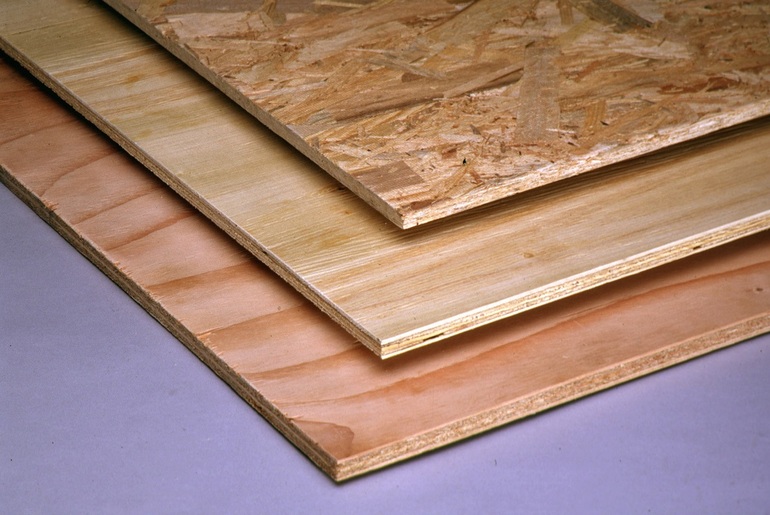
- Drywall - for the manufacture of an integrated niche, which will then be filled with convenient storage systems. This material is easy to paint, so in such a room you can safely experiment with color schemes.
- Old furniture, which is perfect for arranging an original and unique room for clothes and shoes and will save significantly.
- Chipboard. Often, they mount the frame, shelves and drawers for the wardrobe room.
- The joker system is a functional basis with various accessories for filling wardrobes: glass and shelf holders, hooks and hangers.
- Plywood is a durable material that is optimal for the construction of partitions and shelves.
- Wood is a natural raw material used by owners for whom environmental safety and cleanliness of the interior are important.
Sample arrangement
A dressing room is a specific room that needs to be adjusted to certain standards for the proper storage of clothes. When composing a drawing of a room, it should be provided for:
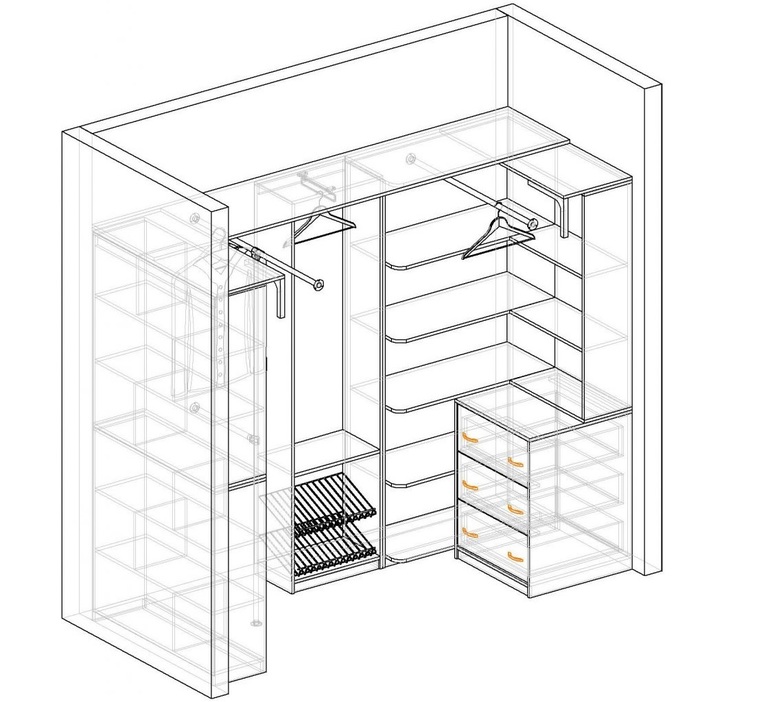
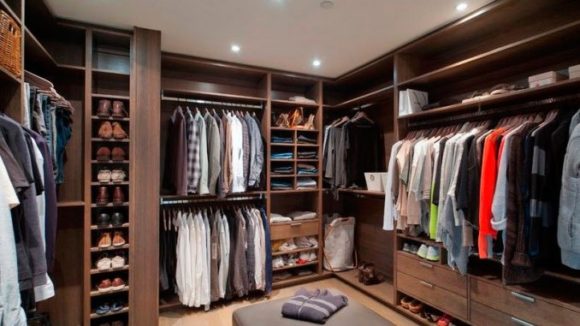
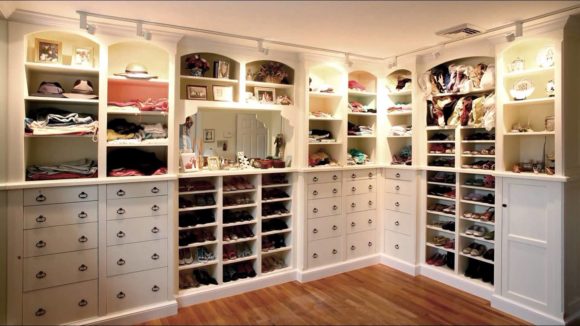
- The section height for heavy outerwear (from bottom to bar) is at least 1.5 m.
- The distance from the bar to the surface of the section is at least 10 cm.
- The height of the section for storing light short outerwear is from one meter (plus 10 cm to the surface).
- The height of the shelves for hats and shoes - it must be planned according to the longest piece of clothing (adding 10 cm).
- The height of the linen shelves, usually component of the order of 25−45 cm
- The optimal depth of the compartments - adding 10−20 cm to the width of the largest hangers.
- The total width - by summing 15–25 cm for each unit of winter outerwear, 10–15 cm - for the demi-season and 5–10 cm - for each dress, trousers or shirt.
- The width of the departments for underwear and hats - according to the number of these things with a small margin.
After choosing the right material for the room, the step of marking and cutting the blanks follows, and then the installation of the frame, for which self-tapping screws and a screwdriver are needed. The resulting frame must be sheathed with drywall and prepared for finishing work, for example, wallpapering, staining or decorating with decorative panels.
An inexpensive and high-quality storage system can also be easily done by yourself. For the manufacture of the frame, you need to fasten the profiles to the wall, and for the construction of shelves an ordinary dark laminate is suitable. It must be cut to size, cut and installed in the system. The mesh for storing shoes can be fixed with metal struts. In the same way, rods for the shoulders are attached.
Making a do-it-yourself wardrobe is a great option for purposeful and curious owners who want to save money and make a comfortable and functional room for storing clothes.

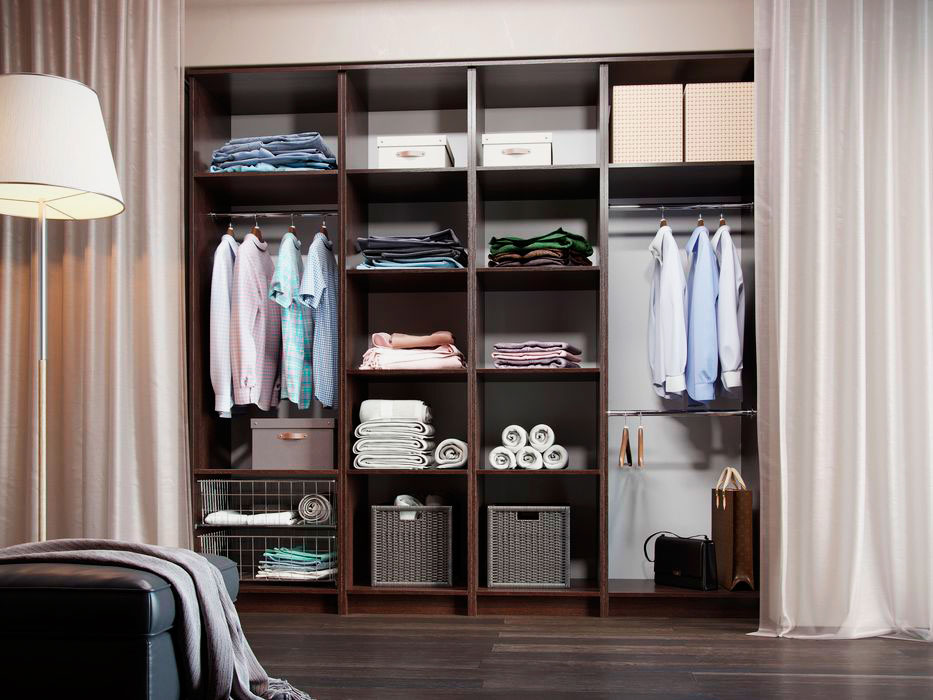



Alas, no comments yet. Be the first!